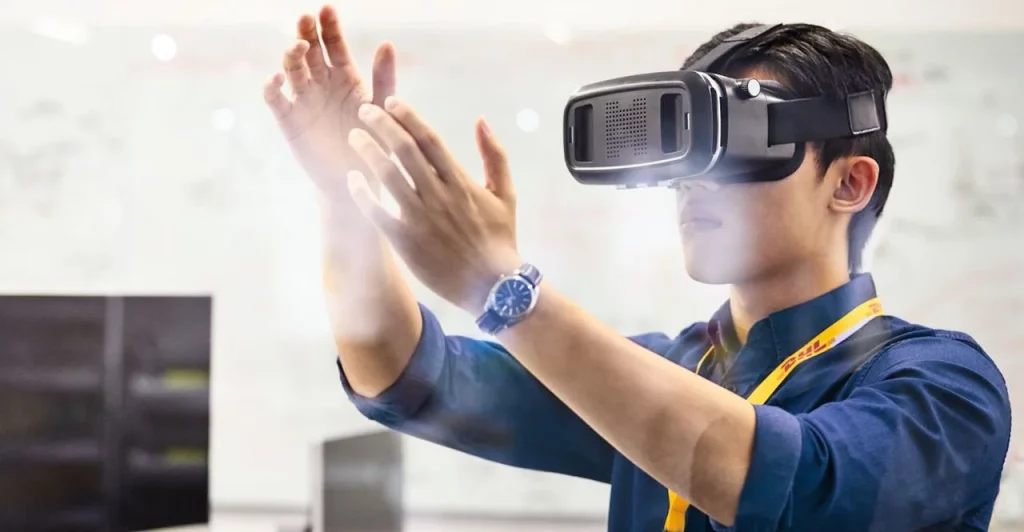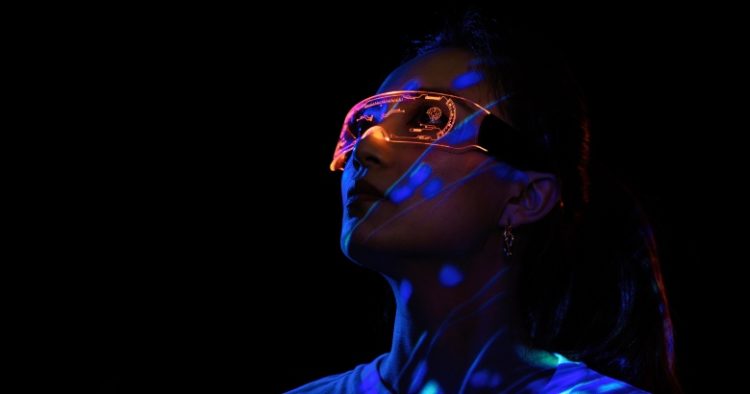1. Introduction: A New Dimension of Human Experience
Virtual Reality (VR) represents one of the most significant technological breakthroughs of the 21st century, enabling immersive, interactive, and multisensory experiences that transcend physical boundaries. While the concept of simulated environments has existed in science fiction for decades, advances in computing power, graphics, and wearable devices have transformed VR from an experimental novelty into a mainstream tool for education, healthcare, industry, and entertainment.
The importance of VR lies not merely in its technological sophistication but in its potential to reshape how humans perceive and interact with the world. By bridging physical and digital realities, VR is revolutionizing the way we learn, work, play, and communicate.
2. A Brief History of Virtual Reality
2.1 Early Concepts and Prototypes
The roots of VR can be traced to the mid-20th century. In 1962, Morton Heilig introduced the “Sensorama,” an immersive arcade-style machine combining visuals, sound, vibration, and smell. A few years later, Ivan Sutherland developed the “Sword of Damocles,” the first head-mounted display (HMD), which laid the foundation for modern VR hardware.
2.2 Dormant Decades and the Rise of Gaming
Although the 1980s and 1990s saw a wave of VR enthusiasm, technological limitations—such as low-resolution graphics, latency issues, and prohibitive costs—hindered its widespread adoption. It wasn’t until the 2010s, with the introduction of affordable, high-performance headsets like the Oculus Rift, HTC Vive, and later Meta Quest, that VR became accessible to consumers.
2.3 The 2020s: Mainstream Adoption
The COVID-19 pandemic accelerated the integration of VR into various sectors as remote work, distance learning, and virtual collaboration surged. Today, VR is entering its next phase: combining with Artificial Intelligence (AI), haptic technologies, and 5G networks to deliver more realistic and interactive experiences.
3. The Core Technologies Behind VR
VR relies on the seamless integration of several technological components:
- Hardware: Headsets with high-resolution displays, motion-tracking sensors, haptic gloves, and even full-body suits enable users to feel present in virtual environments.
- Software: Advanced rendering engines (like Unity and Unreal Engine) power lifelike graphics and physics simulations.
- Networking: High-speed internet and cloud computing allow VR experiences to be shared globally in real-time.
- AI and Machine Learning: Adaptive environments and intelligent virtual agents enhance immersion and interactivity.
These technological advancements have transformed VR from a niche entertainment tool into a robust platform for multiple industries.
4. Applications Across Industries
4.1 Education and Training
VR offers students and professionals the ability to explore complex concepts in immersive environments:
- Medical students can perform virtual surgeries without risk to patients.
- Engineering students can test designs in simulated laboratories.
- Historical events or distant geographies can be experienced as if one were physically present.
This experiential learning approach has been shown to improve retention and engagement.
4.2 Healthcare
In healthcare, VR is revolutionizing:
- Surgical Training: Surgeons practice complex procedures with unprecedented realism.
- Therapy: VR aids in treating phobias, PTSD, and chronic pain through controlled exposure and distraction.
- Rehabilitation: Patients recovering from strokes or injuries use VR to rebuild motor skills in interactive scenarios.
4.3 Business and Collaboration
Global corporations use VR for:
- Virtual meetings and team-building exercises.
- Product prototyping and design reviews, saving time and costs.
- Immersive customer experiences, such as virtual showrooms or real estate tours.
4.4 Entertainment and Gaming
The entertainment industry remains a key driver of VR innovation:
- Fully immersive games offer new storytelling possibilities.
- Concerts and sports events are increasingly hosted in virtual arenas.
- Cinematic VR introduces 360° narratives that place viewers inside the story.
4.5 Tourism and Cultural Heritage
VR allows people to visit distant landmarks and museums without leaving home. Virtual tours democratize access to world heritage sites and provide education about cultural history while reducing the environmental footprint of mass tourism.
5. Societal and Cultural Impacts
5.1 Redefining Presence and Interaction
VR challenges traditional notions of space and presence. Individuals can collaborate with colleagues on the other side of the globe as if they were in the same room. Social VR platforms like VRChat and Horizon Worlds are fostering new forms of digital community.
5.2 Accessibility and Inclusion
For people with disabilities or mobility issues, VR opens doors to experiences that were once inaccessible—from attending school to exploring distant cities or natural wonders.
5.3 Risks of Escapism and Addiction
As VR worlds grow more sophisticated, some users may retreat into virtual environments, raising concerns about addiction, reduced real-world engagement, and the psychological effects of prolonged immersion.
5.4 Cultural Expression
Artists, architects, and performers use VR to experiment with forms of creativity impossible in physical spaces, reshaping the cultural landscape in ways both liberating and disruptive.

6. Ethical, Legal, and Privacy Challenges
- Data Privacy: VR systems collect vast amounts of biometric data, such as eye movements and gestures, raising concerns about surveillance and data misuse.
- Content Regulation: Immersive environments make harmful content—like hate speech, harassment, or misinformation—more impactful and harder to moderate.
- Digital Inequality: The high cost of VR hardware risks deepening the digital divide between those who can access immersive technologies and those who cannot.
- Psychological Well-being: Ethical guidelines are needed to prevent manipulative design that exploits users’ emotions or cognitive biases.
Governments, developers, and civil society organizations must collaborate to establish frameworks that promote safe, equitable, and ethical use of VR.
7. The Future of Virtual Reality
7.1 Convergence with Other Technologies
The future of VR lies in its integration with:
- Augmented Reality (AR): Creating mixed-reality environments that blend digital and physical spaces.
- Artificial Intelligence: Enabling intelligent virtual agents and personalized experiences.
- Haptics and Sensory Feedback: Enhancing immersion by simulating touch, temperature, and even smell.
- 5G and Beyond: Reducing latency to support massive multiplayer virtual environments.
7.2 The Metaverse Vision
Tech companies envision a persistent, shared digital universe—commonly referred to as the Metaverse—where VR plays a central role in commerce, education, entertainment, and social interaction. While the concept remains in development, its realization could fundamentally alter how humans live and work.
7.3 Environmental Considerations
Ironically, VR could both contribute to and help mitigate climate change. While producing headsets and running data centers consume energy, VR can reduce the need for physical travel, lowering carbon emissions for conferences, education, and tourism.
8. Reflections: Balancing Promise and Peril
VR is no longer a futuristic fantasy but a transformative tool reshaping human experience. Its potential for education, healthcare, and cross-cultural understanding is immense, yet so are the risks of inequality, exploitation, and overdependence on digital environments.
The success of VR will depend not only on technological progress but also on the ethical frameworks and social norms that guide its integration into daily life. The challenge lies in leveraging VR as a force for empowerment—enhancing human connection, creativity, and resilience—while avoiding pitfalls that could alienate or harm society.
9. Conclusion: Shaping a Shared Virtual Future
As VR continues to evolve, it offers humanity a powerful tool to rethink and reimagine the boundaries of experience. Its future will be shaped by collective choices: whether to use VR to build inclusive, equitable, and sustainable societies or to allow it to exacerbate existing divides.
By prioritizing accessibility, ethical governance, and cross-sector collaboration, we can ensure that VR serves as a bridge—not a barrier—between the physical and digital worlds. In doing so, virtual reality can become a cornerstone of a more connected and empathetic global community.

















































